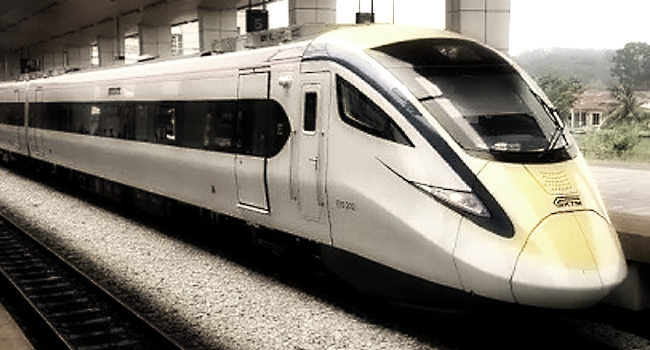Sin Chew Daily
The East Coast Rail Link (ECRL) project is definitely not a very lucrative business, if we were to look at it purely from the perspectives of economic and investment returns. But, if we were to look at it from the country's overall development, we must have faith that this project will eventually bring development to the east coast while generating more job opportunities for the people.
ECRL was a major infrastructural project by the former BN government. Due to the enormous construction cost, when Pakatan Harapan took over the federal administration, the project was shelved for almost a year and was later reinitiated thanks to Tun Daim's effort in renegotiating the terms.
Following the negotiation, the 688km railway was shortened to 640km while the construction budget was trimmed from RM65.5 billion to RM44 billion, with the construction cost per km of rail track cut down to RM68.7 million from RM95.5 million, a good 32.8% reduction.
At the same time, the route would also be realigned southward, passing Kuala Klawang and Nilai in Negeri Sembilan before terminating in Port Klang.
That was what we called ECRL 2.0.
After the re-evaluation of the project, the Perikatan Nasional government decided to revert to the original northern route alignment. Transport minister Wee Ka Siong said the cabinet had on March 31 decided to restore ECRL's Section C to the original route from Temerloh to Port Klang via Bentong and Serendah, and remove the two stations in Negeri Sembilan.
The PN government has dismissed the possibility of powerful backlash from local residents as well as politicians for its decision to bypass Negeri Sembilan. However, Selangor executive councilor Teng Chang Khim has threatened that the state government would not cooperate with the federal government on land acquisition issue, while Negeri Sembilan exco Teo Kok Seong urge spoliticians on both sides of the divide to exert pressure on the federal government to "defend ECRL's route in Negeri Sembilan".
Back to the reality, Malaysia's annual budget stands at around RM300 billion, while the ECRL project itself will cost RM50 billion, which to the country is a massive public investment project. In view of this, its implementation will invariably force out other important projects. As such, we cannot afford to see the project fail in any way.

And since BN, PH and now PN administrations all have agreed to start the mega project, government departments charged with the duty of implementing the project make sure it produces maximum spinoff effects once it is completed and goes into full operation.
Construction must therefore be carried out only after thoughtful planning and evaluation of the project's overall impact on the country from the economic, environmental and social perspectives. Politics must never be the priority consideration.
According to Wee Ka Siong, the 655km northern route will be more economically feasible than the 640km southern route.
He said when the railway becomes operational in 2027, cargo will make up 70% of the revenue, with the rest coming from passenger traffic.
It has been estimated that passenger volume during ECRL's first year of operation will be 5.03 million, as compared to 4.07 million if the southern route is adopted. As for cargo volume, the northern route will be much more superior at 26.12 million tons compared to only 9 million tons projected for the southern route.
Based on the above estimates, the operational revenue of the northern route will be 2.5 times higher than the southern one.
Where real estate development is concerned, the northern route will offer a significant boost to Bentong's commercial and tourist industry development. As for Serendah, it will become a transshipment hub that is poised to buoy the development of the local steel and automobile industries.
On environmental impact, about 180 hectares of forest reserve land will be affected by ECRL's northern route, much smaller than the 490 hectares if it passes Negeri Sembilan.
On social impact, some 4,302 plots of land will be acquired, affecting 11 estates and two bumiputra settlements, while 6,038 plots of land need to be acquired for the southern route, affecting 19 estates and seven bumi settlements.
As of March this year, the construction progress of ECRL stood at 21.4%, meaning there is no way to turn back the project now. What the administrators can do is to ensure that the project can be completed in time and create the maximum spinoff effects once it becomes operational.
Hopefully, ECRL will turn out to be an asset to the nation, not liability!
ADVERTISEMENT
ADVERTISEMENT


































